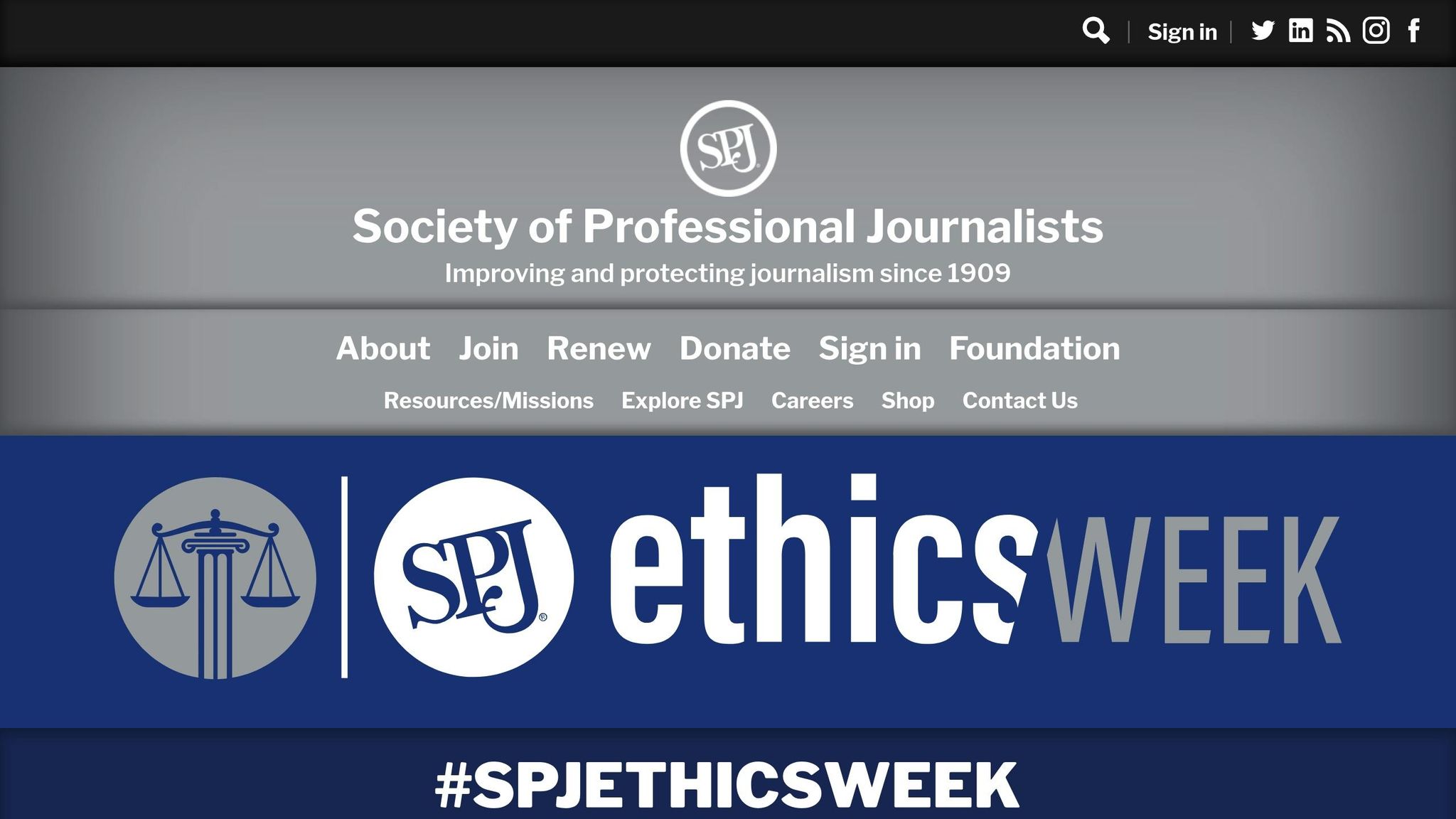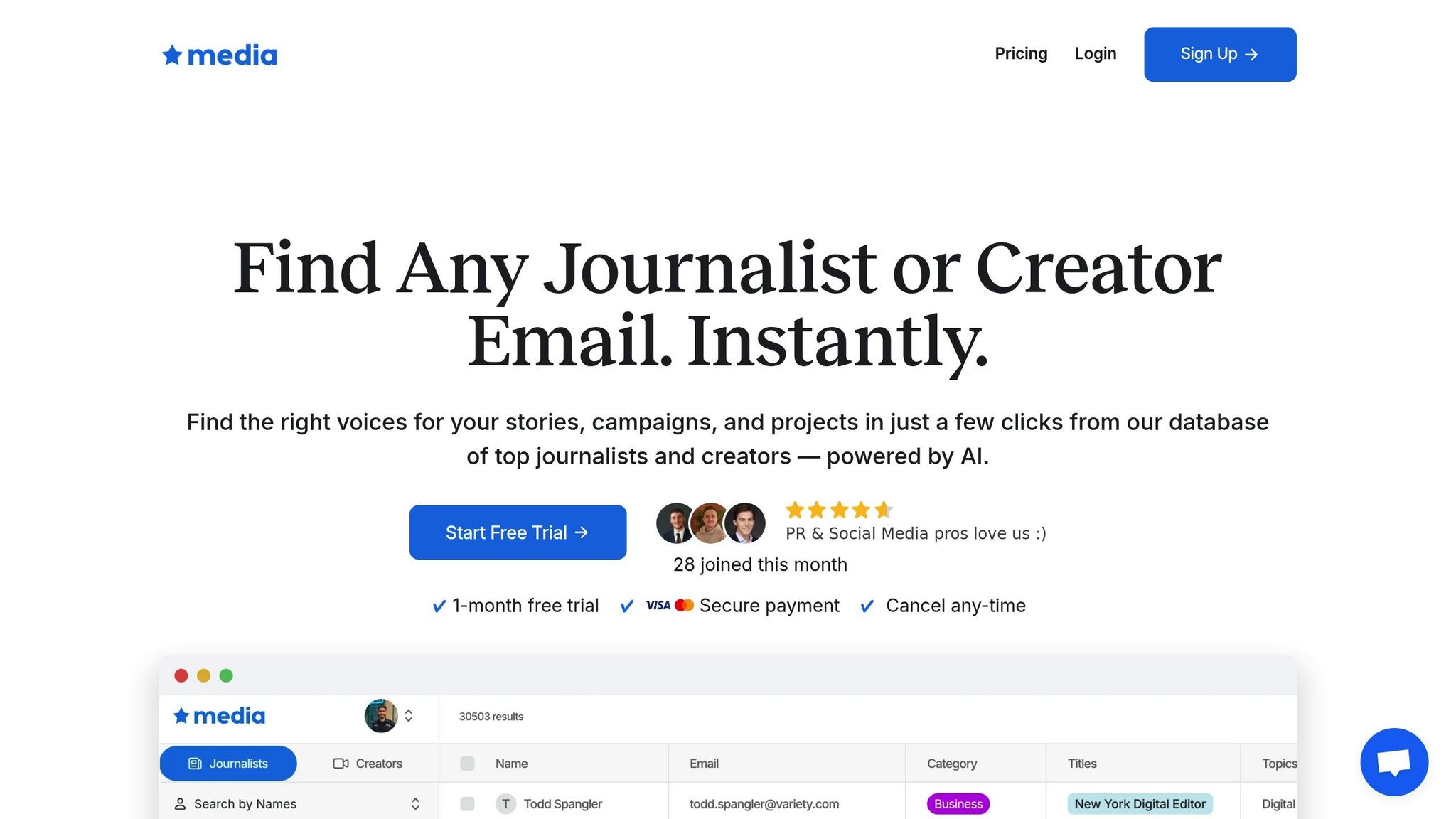Research: AI Transparency and Media Trust
AI transparency in media enhances audience trust, highlighting the importance of clear disclosure and human oversight in journalism.

AI transparency builds trust in media. When media outlets disclose their use of AI - like for writing or research - audiences feel more confident in the information they consume. Hiding AI involvement, however, can harm credibility and weaken public trust. For PR professionals, this means working with transparent media partners is critical to successful campaigns.
Key takeaways:
- Transparency matters: Audiences expect media to disclose AI use and explain its role.
- Younger audiences are more accepting of AI, but all age groups demand openness.
- Hiding AI can backfire: Undisclosed AI use erodes trust and damages credibility.
- Human oversight is essential to ensure accuracy and maintain quality.
To address these challenges, media outlets and PR teams should adopt clear AI disclosure practices, verify AI outputs with human review, and maintain open communication with audiences. Tools like Media AI can help streamline outreach while ensuring transparency, enabling better media relationships and stronger audience trust.
#SPJEthicsWeek: Ethical AI in the Newsroom

Key Research Findings: AI Transparency and Audience Trust
Recent studies reveal that being upfront about AI's role in media creation boosts credibility. While research is ongoing, some clear patterns are emerging. These findings highlight how transparency around AI use shapes audience perceptions and lays the groundwork for tackling current challenges in AI-driven media.
How Disclosure Builds Trust
When media outlets openly disclose AI's role in creating content, it strengthens trust with their audience. Being transparent about AI involvement signals reliability, making audiences more confident in the media they consume.
What Audiences Expect from AI Use in Media
Audiences are generally open to AI being used in journalism, as long as its role is clearly explained. People want to know when and how AI contributes to the content they read or watch. Interestingly, younger generations tend to be more at ease with AI in media, but across all age groups, transparency remains a non-negotiable expectation.
What Happens When Media Doesn't Disclose AI Use
Not disclosing AI involvement can backfire. It erodes trust, reduces engagement, and leaves audiences feeling misled. This lack of transparency doesn’t just hurt credibility - it can also have a ripple effect, negatively impacting public relations and audience loyalty.
Current Problems with AI Practices in Media
While the importance of transparency is widely acknowledged, media organizations often face hurdles in adopting responsible AI practices. The rapid integration of AI tools, coupled with a lack of robust oversight, creates a risky landscape where potential downsides can overshadow the benefits. This imbalance has led to inconsistent practices and heightened concerns about reputational damage.
High AI Use, Few Clear Policies
One major challenge is the lack of well-defined policies. Many media outlets are quick to embrace AI tools but fail to establish clear ethical guidelines or disclosure requirements. Without a structured framework, newsrooms often leave decisions about acknowledging AI involvement to individual discretion.
This piecemeal approach results in inconsistent transparency, even within the same publication. Such variability can undermine quality control and editorial standards, leaving readers uncertain about the reliability of the content they consume.
Reputation Risks from AI Mistakes
AI's speed in generating content can sometimes come at the expense of accuracy. Errors, including "AI hallucinations" - when AI produces information that sounds credible but is factually incorrect - pose serious risks to reliable reporting.
When inaccuracies make their way into published content, the damage to reader trust can be significant. Even after corrections are issued, the initial mistake may leave lasting doubts about the publication’s credibility. This can fuel broader skepticism about journalistic integrity and place added pressure on media organizations to demonstrate their commitment to accuracy.
To address these challenges, many outlets must revisit their oversight processes, ensuring that AI-generated content is thoroughly vetted. Strengthening internal governance and adopting transparent AI practices are essential steps to maintain reader trust and uphold the standards of responsible journalism.
Using Media AI for Transparent Media Relations

Navigating the complexities of media relations requires tools that ensure clarity and efficiency. That’s where Media AI steps in - a platform designed to help PR professionals manage media outreach with precision and transparency.
What Media AI Brings to the Table
Media AI provides access to a database of over 30,000 journalists and creators. With powerful search and filtering tools, users can target contacts based on specific criteria like beat, publication, location, or audience size. This approach moves away from generic outreach, focusing instead on meaningful and precise engagement.
The platform also simplifies outreach management with export features, ensuring teams stay organized. Plus, with regularly updated contact details and a no-contract policy, Media AI offers the flexibility to adapt to changing campaign needs - perfect for dynamic PR strategies.
Creating Transparent Campaigns with Media AI
By combining detailed contact data with precise filtering options, Media AI empowers PR professionals to craft tailored outreach strategies. This level of customization promotes open communication and builds trust with media contacts, laying the groundwork for stronger, long-term relationships.
Media AI Pricing Options
Media AI offers three flexible pricing plans to suit various needs:
- Journalist Database: $99/month for full access to journalist contacts, including advanced filtering and export tools.
- Creators Database: $99/month for comprehensive access to creator contacts.
- Full Database: $149/month for combined access to both journalist and creator data.
The no-contract pricing structure is particularly beneficial for PR agencies and freelancers, allowing them to scale their tools as campaigns evolve without being locked into rigid agreements.
How PR Professionals Can Build Transparency and Trust
As earlier research has shown, the risks of AI opacity are real. For PR professionals, adopting transparent AI practices and clear communication strategies can lay the foundation for trust. Being upfront about AI use not only builds credibility but also positions PR teams as forward-thinking as audiences become more aware of AI's role in media.
Clear AI Disclosure Methods
Studies reveal that audiences expect brands to disclose their use of AI. For instance, a survey of 2,000 U.K. consumers found that transparency about AI involvement is a must. This expectation gives PR professionals a chance to strengthen trust by being proactive and specific about AI use.
Instead of vague statements like "AI-assisted content", explain exactly how AI is being used - whether it's for research, drafting, data analysis, or building media lists. Specificity can make all the difference in fostering trust.
Timing is just as important as the details. Be upfront about AI involvement in press releases, pitch emails, and campaign materials to avoid the perception of secrecy. To maintain consistency, consider creating a standardized disclosure template for your team. This ensures that your messaging remains clear, natural, and approachable.
When done right, disclosure not only builds trust but also highlights how AI complements human expertise, combining efficiency with thoughtful oversight.
Combining AI Tools with Human Oversight
Journalists have concerns about AI, with 72% citing factual errors as their top worry. This makes human oversight a critical component in maintaining accuracy and credibility.
Human judgment is essential for PR work, especially when it comes to understanding context, audience expectations, and the subtleties of relationships. While AI can quickly process data and draft content, it's up to PR professionals to ensure that the output aligns with brand values and ethical standards.
Set up clear review processes where team members verify all AI-generated content before it’s shared with media contacts or audiences. This includes fact-checking statistics, verifying quotes, confirming contact details, and ensuring the tone matches your brand's voice. Relying solely on AI risks creating messaging that feels impersonal. Instead, think of AI as a starting point - a tool to streamline workflows - while human professionals refine, personalize, and add the emotional nuance needed for authentic communication.
Keeping Open Communication with Audiences
Transparency isn’t just about internal checks; it’s also about fostering open communication with your audience. With only 38% of PR professionals currently having AI guidelines in place, it’s clear that proactive communication is key to building confidence.
Invite feedback about your AI practices by including contact details in your disclosure statements. This approach turns potential skepticism into an opportunity for dialogue, showing your commitment to accountability.
Be clear about how AI supports your work. Explain how it enhances tasks like research, outreach, and data analysis, so audiences see it as a helpful tool rather than a replacement for human effort. While many journalists are open to AI in outreach - only 27% are strongly opposed - they still expect reassurance that quality and accuracy won’t be compromised.
Consider documenting your AI practices and sharing them transparently, whether through a dedicated section on your website or in client reports. This visibility can boost stakeholder confidence and normalize the conversation around AI in PR.
Regular updates about your AI use can also help ease concerns. Share insights about new tools, lessons learned, or changes to your AI policies. Keeping the dialogue open ensures that transparency remains a cornerstone of your relationships with clients, media, and audiences alike.
Moving Forward with AI Transparency in Media
Public relations professionals need to rethink how they incorporate AI into their workflows. Instead of seeing disclosure as a hurdle, savvy teams use it to their advantage. When you openly share how AI supports your efforts - whether it’s creating targeted media lists, analyzing campaign performance, or speeding up research - audiences are more inclined to trust your expertise. This shift not only builds credibility but also paves the way for balancing AI tools with thoughtful human oversight, using platforms like Media AI as an example.
AI isn’t perfect, which is why human review is essential. Clear verification processes, strict editorial control, and a commitment to aligning content with your brand’s voice and values are non-negotiable. These steps ensure that AI’s role in your work enhances, rather than detracts from, your reputation.
For teams looking to adopt transparent AI practices, tools like Media AI provide a solid foundation. Media AI prioritizes clarity by offering straightforward tools for finding the right contacts without relying on hidden algorithms. This combination of AI-driven efficiency and human oversight fosters a stronger connection with your audience through open communication.
Incorporating human oversight isn’t just about catching mistakes; it’s also key to keeping your audience engaged. Organizations that succeed in this space openly discuss their use of AI, actively seek audience feedback, and continually improve their processes. Transparency goes beyond compliance or managing risks - it’s the cornerstone of building trust in a media world increasingly shaped by AI.
Now’s the time to embrace transparency and position your team as a leader in the evolving AI-driven media landscape.
FAQs
How can media organizations use AI transparency to build trust with their audience?
Media organizations can build stronger trust with their audiences by openly discussing how they use AI in their content creation process. Whether AI is employed for research, writing, or editing, it’s important to clearly communicate its role and reassure readers that ethical standards and responsible practices are in place.
Studies show that when organizations are upfront about their use of AI and demonstrate accountability, audiences are more likely to trust the integrity of the content. This transparency not only promotes a sense of honesty but also reinforces a professional approach, both of which are essential for earning and maintaining trust.
What risks do media organizations face if they don’t disclose AI’s role in creating content?
Failing to openly acknowledge the role of AI in content creation can seriously undermine a media organization's trustworthiness and reputation. When audiences discover they've been kept in the dark, they may feel deceived, leading to a loss of confidence in the integrity of the content and the brand behind it. This kind of fallout can tarnish a brand's image, making it harder to maintain loyal followers.
There are also legal implications to consider. Not disclosing AI involvement could result in lawsuits, copyright conflicts, or even regulatory penalties if transparency laws are breached. The stakes are high, and the consequences can be costly.
On top of that, hiding AI's role can unintentionally fuel the spread of misinformation or even defamation, further chipping away at public trust. By being upfront about AI's contribution, organizations can not only protect their reputation but also reduce these risks, demonstrating a commitment to honesty and accountability. Transparency, in this case, isn't just ethical - it's smart business.
How does Media AI help PR professionals build trust and ensure transparency with media contacts?
Media AI provides PR professionals with tools designed to promote ethical communication and openly disclose AI usage in content. These features not only help maintain transparency but also make it easier to build trust with audiences. By simplifying the way professionals engage with journalists and content creators, the platform ensures interactions remain both efficient and reliable.
This focus on openness reflects recent studies emphasizing the value of transparency in AI-driven media practices. By encouraging ethical standards, Media AI supports professionals in creating stronger, trust-based connections with their media networks.





